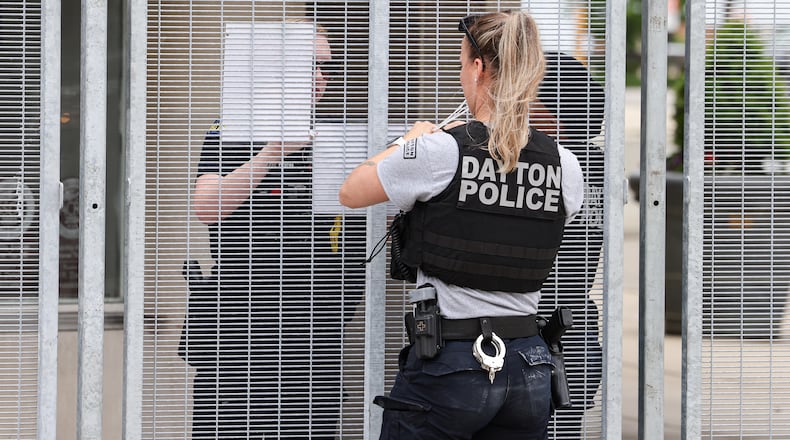Credit: Bryant Billing
Credit: Bryant Billing
But when the police department has worked to try to launch new surveillance tools or expand existing tools there has been pushback from some community members who believe the technology can be misused or has serious disadvantages or risks to privacy and civil rights.
The Dayton Police Department recently was awarded $400,000 in grant funding from the Ohio Violent Crime Reduction Grant Program. The police department received the second largest award in the state in the latest funding round.
An executive summary of the city’s application for funding says the grant money will be used to combat crime in the Miami Chapel, North Riverdale and Residence Park neighborhoods, which all saw a significant increase in violent crime last year.
Miami Chapel is south of U.S. 35 in West Dayton and includes the DeSoto Bass Courts housing complex. Residence Park is west of Gettysburg Avenue and north of West Third Street. North Riverdale is east of North Main Street and north of Ridge Avenue.
Credit: Jim Noelker
Credit: Jim Noelker
A Dayton Daily News investigation that was published in April found that Miami Chapel, North Riverdale and Residence Park were among the city neighborhoods with the most violent gun crimes in 2024.
The police department’s application for grant funding says these three neighborhoods had 89 gun-related crimes last year, including 30 aggravated robberies and 10 killings and cases of “nonnegligent manslaughter.”
A project description that was part of the grant funding application says the police department plans to purchase three Flock gunshot detection systems, 27 license plate reader systems and one Flock safety drone to serve as a first responder.
Fixed-site automated license plate readers were deployed across Dayton in early 2023, and there were 72 devices in operation last year. The fixed-site devices are usually on utility and traffic signal posts. Police vehicles also are equipped with the technology, which scans license plates and issues alerts, like when vehicles are reported stolen.
“They have been used to recover stolen vehicles, document investigations related to stolen vehicles and to apprehend violent offenders,” said Major Hall.
The police department previously used a controversial ShotSpotter gunshot-detection system, but the city decided not renew the contract when it expired at the end of 2022.
The project description says gunshot detection technology will help police with rapid response, evidence collection and data analysis to develop targeted interventions.
The department told this newspaper that gunshot detection sensors will be deployed across a three-square-mile area that has a high concentration of violent gun crimes.
Critics of the technology say it is unreliable and has not been proven to reduce shootings, violence and other crime.
Critics also say the technology issues alerts that send officers to locations of alleged gunshots without any other information, which potentially can lead to unnecessary and unjustified pat downs, investigatory stops, arrests and other encounters between citizens and police that have the potential to escalate.
Police say drones as first responders provide aerial surveillance, rapid response and real-time intelligence. The police department currently has 16 drones, also called unmanned aircraft systems (UAS).
Police said the drones-as-first-responders program will provide citywide drone coverage, which can help police quickly respond to crimes in progress and assist with other emergencies, like when someone falls into the river and emergency crews need to locate them.
Drones help can officers with situational awareness and de-escalating potentially dangerous events, Hall said.
Credit: Jim Noelker
Credit: Jim Noelker
The police department said it is proposing to implement a two-year pilot program to assess the effectiveness of these tech tools, develop deployment strategies and allow for community engagement.
“Before moving forward with the drones-as-first-responders program, the department will develop a draft policy, engage with the community, and present the information to the city commission during a public hearing,” the police department said. “If approved, these technologies will be deployed later in 2025.”
Commissioners Darryl Fairchild and Shenise Turner-Sloss this week said they would like to see data and data analysis that indicates whether these tech tools are truly helping reduce crime and worth the costs. Other officials said they believe the technology is especially valuable given resource and staffing limitations.
About the Author




